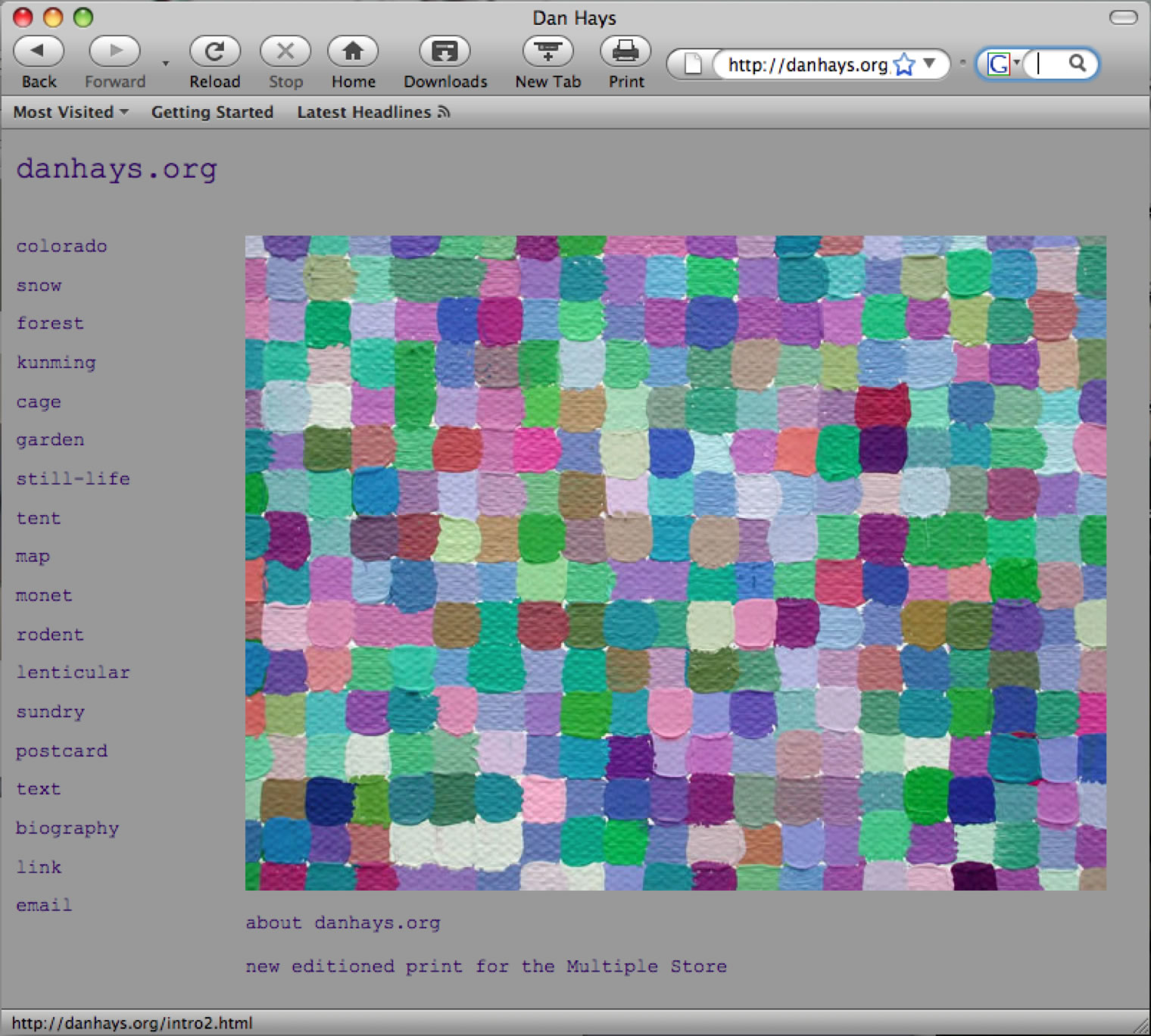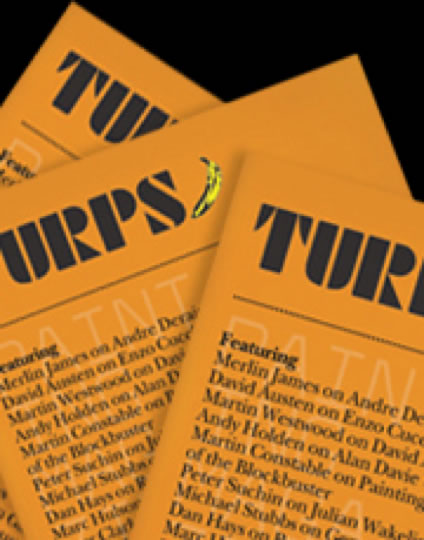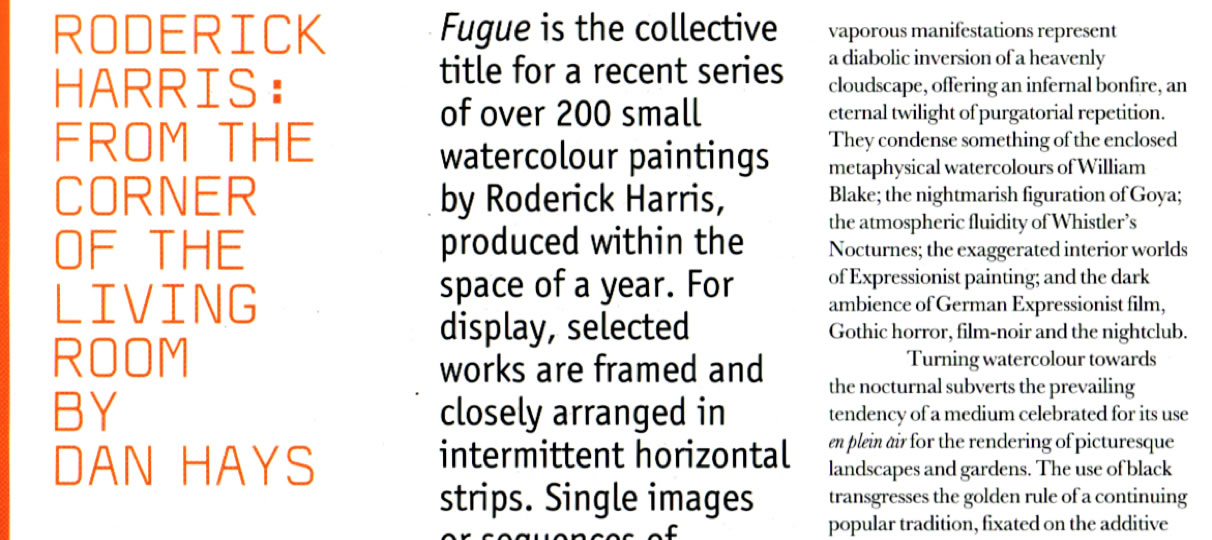INITIAL MONITORING REPORT
Dan Hays, June 2009
Research title:
Painting in the Light of Digital Photography
OUTLINE PROJECT PLAN (January 2008)
The translation of pictorial information from various photographic media into painting has been my primary artistic concern for many years. A fascination with the elusive painterly qualities of electronic and digital imagery has evolved out of this, leading to my core research, the on-going Colorado Impressions project. In 1999 I discovered the website of another Dan Hays living in the Rocky Mountains of Colorado. Using his low-resolution landscape photographs as models, an exploration through oil painting of the strong associations between digital image compression and Impressionism has grown in complexity, bringing into frame questions around subjectivity, authentic experience and romantic projection. Sourcing of photographic material has extended to websites across the whole state of Colorado.
In my work digital photographs are meticulously converted into paintings with the aid of image manipulation software in numerous ways: explorations of colour separation and modulation; mathematical systems and pattern; divisionism, restricted palettes and tonal limitation; simulated texture and lighting effects. These processes serve to highlight painting’s imperfect physicality and subvert the mechanics of illusionism. The aim is to generate simultaneous, ambiguous and three-dimensional convergences of the represented scene and the physical surface (or immaterial screen), with subject matter that reflects our idealised and dislocated relationship to the natural.
Painting and photography share an entwined history, with painting’s trajectory through Modernism often framed as a reaction or response to the increasing ubiquity of photographic material. The particular physical and formal qualities of the two media, in terms of veracity, temporality, materiality, relative value, etc, are at play in the work of painters and discussions around it through the last century. My inquiry proposes that the immateriality and infinite reproducibility of digital imagery presents a phenomenological shift in this relationship, presenting many startling similarities and contrasts to painting. The aim will be to examine this new situation through interrelated conceptual frameworks, with the history of landscape painting as the common thread:
Canvas, screen and the virtual window.
Photorealism, immateriality and timelessness.
Modernism’s emblematic grid and the digital matrix.
Data compression, blocking-artefacts, atmospherics and Post-Impressionism.
Computer simulations, painting styles and the picturesque.
Iconography, spectacle, romanticism and the digital sublime.
Figure in landscape, realism and telepresence.
Authenticity and subjectivity in cyberspace.
Web-cameras, surveillance and the aesthetics of functionality.
Data corruption, noise, thresholds of recognition, memory failure and loss.
The Internet as generator of simulacra and manifestations of the uncanny.
These themes will be approached with an elliptical and tangential methodology, necessarily taking the networked form of a website. Material will be sourced from philosophical, art historical and fictional texts, and a close reading of the work of a broad range of artists, both contemporary and modern. The ambit of the research will not be restricted to painting - a look at artists working with digital media will be essential.
On the practice side, there are many more technical possibilities for exploring painting’s poetic and expressive qualities within the confines of the grid. Recent experiments with mirroring, skewing, noise, and colour inversion have suggested symbolist and psychoanalytic readings. Along with painting, there will be other related investigations, including experimentation with lenticular 3D printmaking, continuing from a current research project at Chelsea College of Art where I am an invited artist case study.
Many writers have investigated the influence of digital technology on photography and the moving image. I believe that painting offers a novel perspective from which to examine the philosophical ramifications of computer imaging from our side of the screen, as it operates by transforming representations back into physical objects.
I have presented lectures and written extensively around issues raised by my artistic practice over many years, recently in an essay for the academic web-journal Culture Machine. Working within the structure of a PhD program will allow deeper reflection on these ideas, providing a space in which to disentangle and reformulate themes with other artists and academics, offering challenging new approaches to the artistic and theoretical contexts that I wish to explore.
RESEARCH UNDERTAKEN SINCE COMMENCING THE PHD
This will be split into several categories: painting, lenticular printmaking, screen-printing, exhibitions, web-design, writing and participating in symposia.
Importantly, several projects represent continuations or culminations of research carried out before the doctorate officially commenced in September 2008. All the work I will be detailing, however, was carried out after being offered a place in February 2008, when my attentions became primarily oriented towards PhD research. My project simply brings into focus lines of inquiry that have occupied me for many years, so necessarily forms part of a continuum. Saying this, I must make clear that arriving at some kind of conclusive, or at least revelatory, synthesis of my art practice and textual research by the end of the PhD is my sincere expectation. This will be discussed later in the Looking to the Future section after describing in some depth the research activities I have been following, which together comprises a fertile and coherent research framework. I must insist that this has to be speculative to some degree at this point. Already, through immersion in written and practical work, diverse reading, and chance encounters, new approaches within the broad confines of my research proposal have opened up.
Painting
My painting production for over a year was carried out with a solo exhibition in mind, Failing Light, which took place at Zürcher Studio, New York in March 2009 (detailed later)
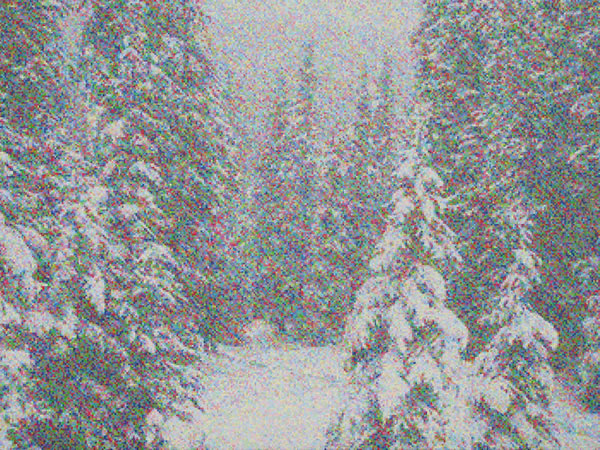
Colorado Snow Effect 5, 2008, oil on canvas, 122 x 162cm
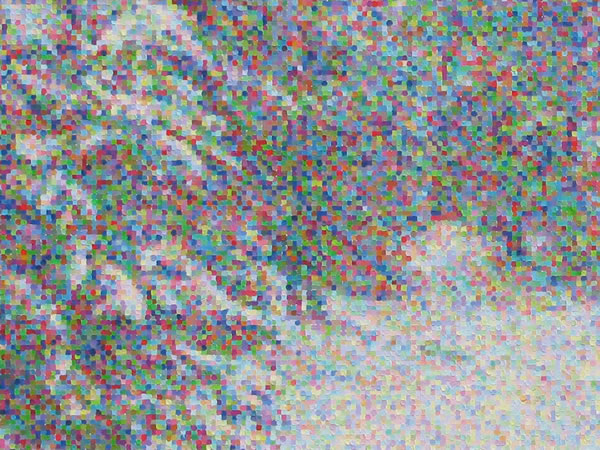
Detail
The first 'impression' is of a blizzard of tiny, brightly coloured dabs of paint (arranged on the familiar grid), but as one moves away the materiality of the paint evaporates and the colour leaches away, revealing the monochrome image of snow covered pines.
When enlarged, the original jpegs break down into grayscale pixels. Rather than producing a painted equivalent, Hays replaced these with separate colours which, when combined, merge perceptually into black or grey. It's a kind of misapplication of optical science: where Monet or Seurat used related methodologies in an attempt to faithfully render the molecular shimmer of light and form, Hays employs a pointlessly elaborate system to simulate the appearance of a throwaway few hundred kilobytes of visual information.
And yet looking at the painting is a thrilling, experiential encounter - in a sense that echoes Bridget Riley we are made manifestly aware of the physiological phenomena of vision. Enmeshed in the work's field - snow-blinded - one feels acutely conscious that the 'image' does not exist. It is an apparition - it occurs between surface 'noise'/materiality and the act of looking, of physiologically processing visual information.
In Colorado Snow Effect 5 the colour system is further manipulated, as a means of introducing visual information not in the source photograph. By tweaking or replacing a few pixels here and a few pixels there, Hays suggests what appears at a distance to be a trail of footsteps preceding the lower half of a tiny figure into the pines, where it merges with the shadows of the trees. It's barely there - you think you've seen it but you're not sure. But to inspect the image more closely of course is futile: the closer you get the less discernible the 'figure' is, quickly breaking down into abstract noise - a meaningless array of coloured squares. One could say that the human eye has an appetite, a desire for an object to focus on. These paintings work with this, tease and frustrate it: we think we see something (or, more pointedly, someone), drawing us into the painting, but as we approach it evaporates, atomises. Like a confused camera on auto-focus, unable to latch onto anything in an uncertain field, the viewer is caught between two perceptions - stuck in a back / forward flicker.
(Excerpt from Faraway So Close, an essay by Marc Hulson in Turps Banana issue 5)
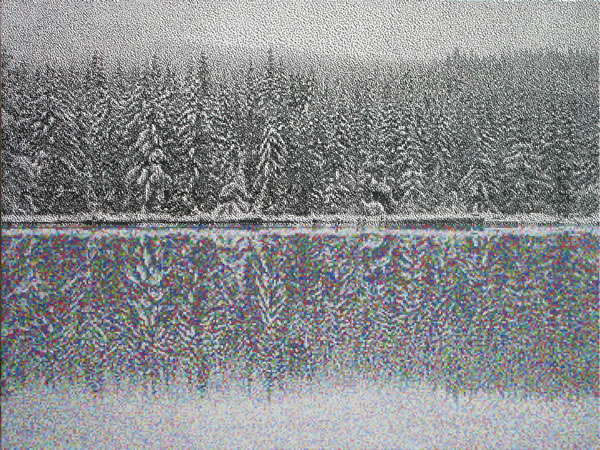
Colorado Snow Effect 6, 2008, oil on canvas, 137 x 183cm

Detail
Colorado Snow Effects
In the winter of 1995/96 I travelled to the Auvergne region in France to visit my dad Bill and his wife Catherine. One morning I awoke to find that it had snowed on the pine forest overnight. I took numerous slide photographs of the astonishingly beautiful scene, and after processing back in London, was intrigued by how these images looked in miniature. They reminded me of pictures of 'snow' on a TV screen. In their painting, using a dragging technique, I was excited by the effect of a frozen video frame rather than a still photograph that emerged by accident - a more transient and fleeting kind of picture, in contrast to the monumental nature of the subject matter. This discovery fed into the development of much of my subsequent work.
More recent painting experiments are collectively titled Colorado Snow Effects, and tackle a visual conundrum. Snowscapes are black and white, or at least the absence of colour, so long as the sky is grey, is not immediately apparent in many cases. In these works the snowy scene is depicted with pixels of pure saturated colour. From a long distance these points of colour optically merge and form a grey-scale image, revealing the subtle tones required to appreciate the forms of pine trees or line of a hillside. At close range colour perception takes over and the impression is one of abstracted coloured noise. These paintings play with ideas of the white noise between TV channels; with landscape as background and background radiation; and with paying perverted and futile homage to the use of additive colour implemented by Impressionism and Pointillism. Whereas the intentions of these movements was to emulate the immediacy of atmospheric scintillation, representing a ‘natural’ impression of a scene bathed in light, the use of pure colour to represent a grey landscape seems a ridiculous optical overindulgence; the metaphorical connections between snow, whiteness, silence and purity are subverted through the pathos of exuberant, noisy colour.
Also see related lenticular experiments Colorado Snow Drifts produced as part of an on-going research project with FADE (Fine Art in the Digital Environment) at Chelsea college of Art, and Spring Snow, a screen-print commissioned by the Multiple store (both detailed later).
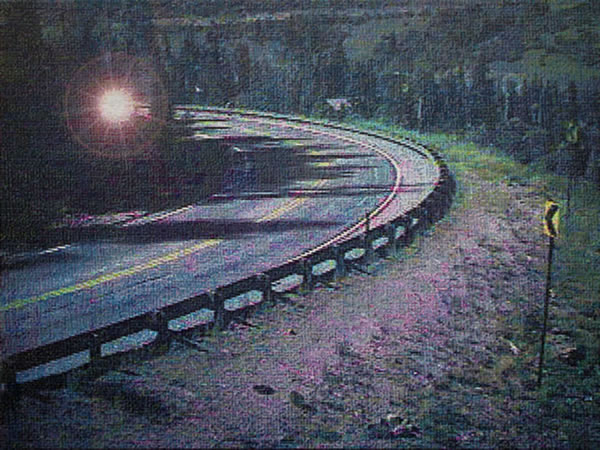
American Night, 2009, oil on canvas, 122 x 163cm
The French use the term 'la nuit Americaine' for the cinematic practice of shooting 'day for night'. Truffaut's film of the same name attests to this.
The source image came from one of the numerous traffic webcams in Colorado that I monitor. The image was darkened so that the shadows appear to be from moonlight. This is accentuated by the addition of a lens-flare effect, suggesting car headlights, or somehow the idea of the light of the sun leaching through a transparent landscape after it has sunk below the horizon. It's painted in transparent glazes in four-colour separation with a super-imposed canvas texture.
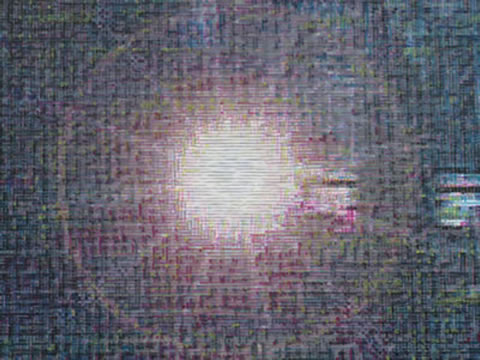
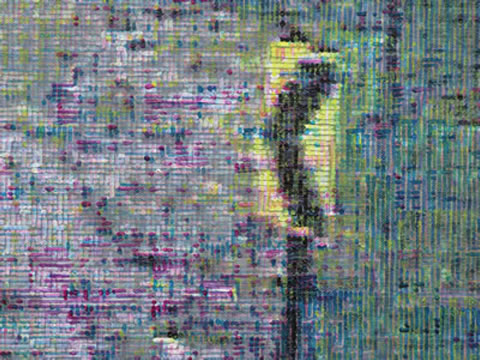

Details
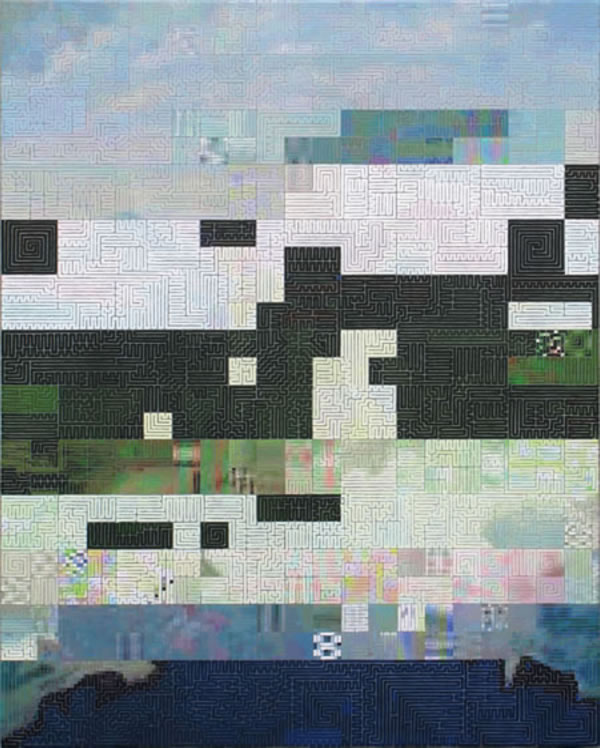
Returning Wanderer, 2009, oil on canvas, 75 x 98cm

Detail
In researching romantic landscape painting, a simple Google image search for 'Caspar David Friedrich' yielded results for his most famous paintings, Wanderer Above the Sea of Mist (1818) being top of the list. Amidst the numerous thumbnail reproductions of this painting was a curious abstracted image. The corrupted file still contained enough information to confirm its origins. The clouds at the top and the outline of the rock the figure stands on were still visible:
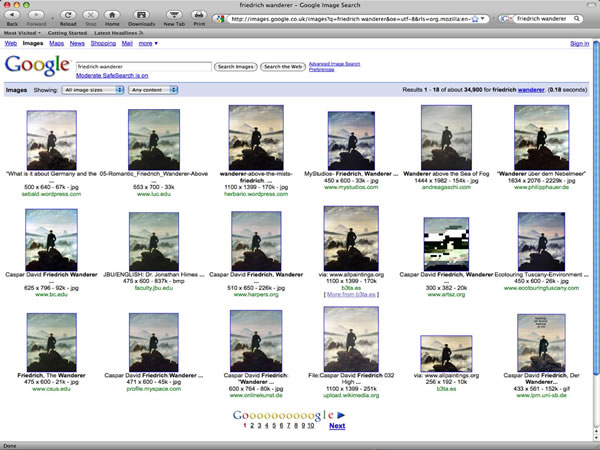
I decided to paint this image the same size as Friedrich's original. It's painted in one continuous, snaking line over a grey background, forming an endless loop, whilst invisibly tracing the outline of the figure on its travels. The title Returning Wanderer refers to this technical conceit and the idea that the picture has returned after wandering the digital wilderness, and perhaps through the prism of art history in the intervening years since its manufacture, a forlorn harbinger of the digital sublime.
Two exhibitions featuring these paintings will be documented later.
Lenticular Printmaking
Early in 2008 (concurrent with applying to do a PhD at the Centre for Useless Splendour) I was invited to become an artist case study within a research department titled FADE (Fine Art Digital Environment) at Chelsea School of Art by Professor Paul Coldwell.
http://www.faderesearch.com/digitalsurface/
The following text is comprised of excerpts from a 2500 words paper I gave at the Personalised Surface conference at the V&A on 3rd April 2009, to be published some time soon, titled Colorado Snow Drifts:
The Personalised Surface within Fine Art Digital Printmaking project has enabled me to engage completely with the production of lenticular prints, a technology I had explored in two earlier projects. Lenses were sourced and sponsored by DP Lenticular and expensive software for interlacing images was rejected, and simple, if laborious, techniques developed in Photoshop. It is entirely feasible now to play with lenticular image creation using an inkjet printer in the studio. I hope to define here various aspects of the functioning and significance of lenticular printmaking, its particular optical qualities, limitations, potentialities and deficiencies. This will include looking at its use in popular visual culture and possible value as an expressive medium beyond novelty and spectacle, thereby attempting to apprehend its particular material nature in relation to painting, photography and printmaking.
Painting offers a novel perspective from which to examine philosophical ramifications of computer imaging from our side of the screen, as it operates by transforming representations back into physical objects. The quasi-object nature of lenticulars forms an alternative medium to painting in the translation of visual information into the physical realm.
The illusion of the scene projecting out of the image-object is perhaps the most seductive effect that lenticular stereography offers. It accentuates the quasi-object nature of the image, and presents a visual conundrum in trying to gauge the location of the lenticular sheet in space. The limitations of representing more than a few inches of depth with lenticulars would suggest that for successful, life-like representation the genre of still life would be most appropriate as a subject for realistic lenticular reproductions. However, it is exactly this conundrum, the minds ability to project deep space into landscape representations, which intrigues me. We do this with regular paintings and photographs. The crude and impoverished depiction of deep space within lenticular prints speaks of the need to cherish, re-live and animate memories of place.Museum dioramas offer a similar effect, not to mention snow-domes.
With my lenticular experiments for the Personalised Surface project I have continued an exploration of optical effects translated into paintings over the last year, collectively titled Colorado Snow Effects. Visualising ways in which to translate a snow scene into a lenticular image, following the example of the Colorado Snow Effect paintings, is not straightforward, but offers tantalising possibilities. The implementation of both 3D and animation effects on an image necessarily low on tonal information is a curious conundrum. The paintings are concerned absolutely with thresholds of recognition, a quality likely to be either exacerbated by animating the coloured pixels or crudely reversed through 3D rendering. Dividing the scene up into cut out layers of receding space cancels out some of the three-dimensional ambiguities of digital noise; so many experiments were made with receding layers of pixellated falling and rising snow. These “flurrying” effects were introduced to the scenes at a later stage to reintroduce atmospheric depth. Other experiments have introduced animated horizontal bars to give the impression of poorly tracked analogue video. Stills from amateur footage of cable car rides have been interlaced and warped. Composite scenes have been produced by digitally cloning trees, suggestive of a limited appreciation of nature’s diversity through a categorising, scientific mentality, and endless tracts of farmed coniferous forest.
Exploring the technical limitations of lenticular printmaking offers visual metaphors for loss and emergence of memory, half-frozen, yet still alive, drifting behind an icily transparent sheet of plastic; a technological barrier to accessing nature.
Colorado Snow Drifts, variable dimensions - A5 to A2:
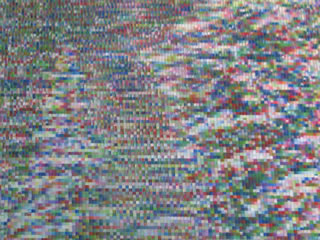

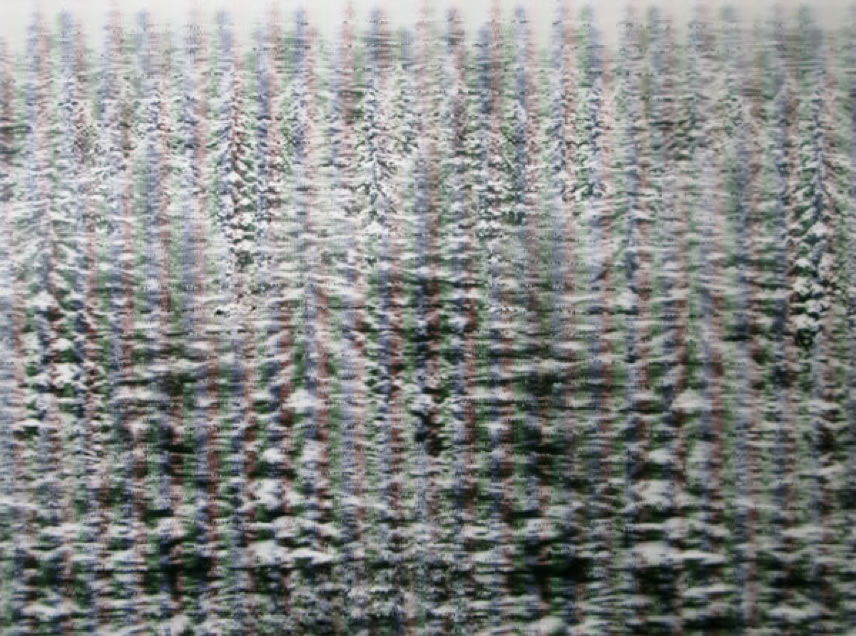
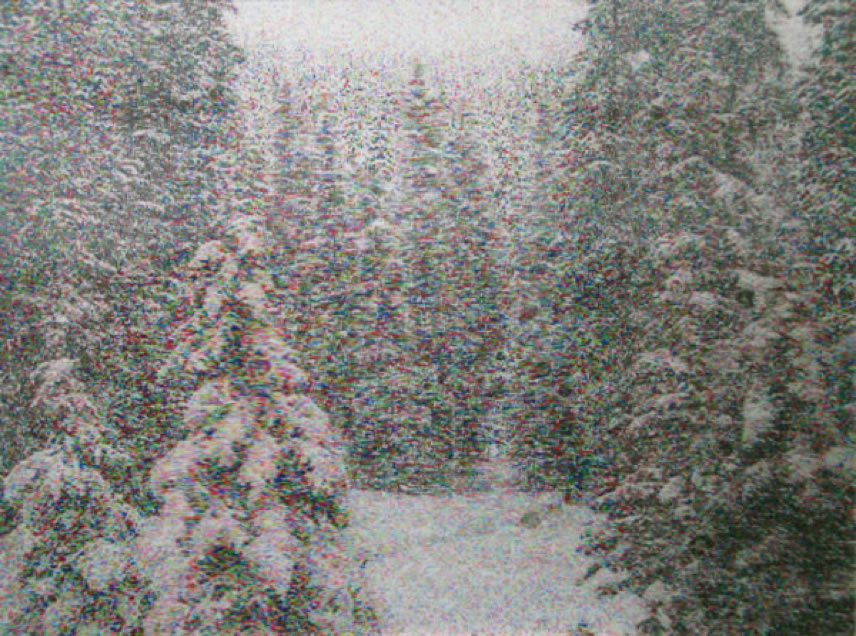
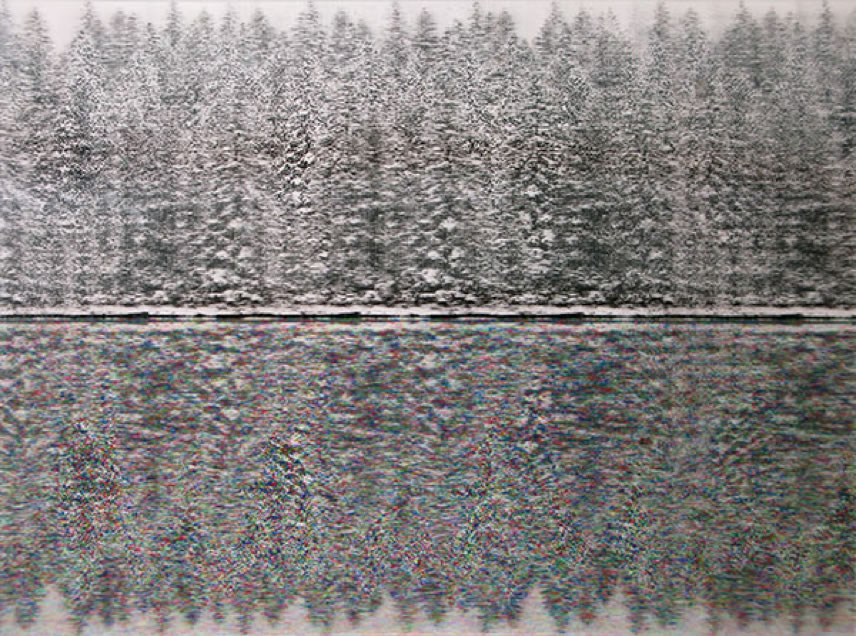
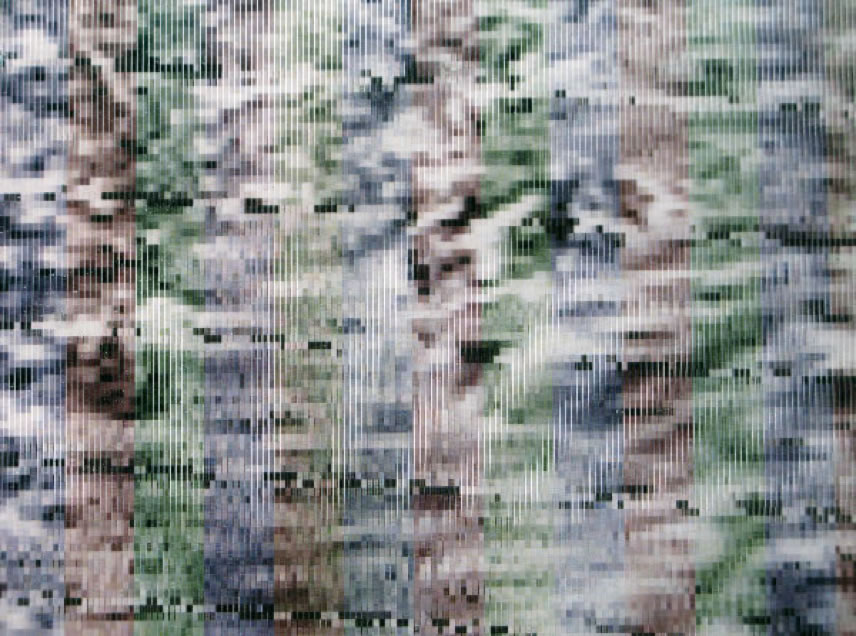
Exhibitions, writing and talks connected to the Personalised Surface within Fine Art Digital Printmaking research project:
Close to the Surface: Digital Presence, exhibition at the ICA, November 2008

Exhibition shot of lenticular experiments featured in the Close to the Surface: Digital Presence exhibition at the ICA in November 2008. It featured a symposium including the artists Professor Paul Coldwell, Bruce Gernand, Jonathan Kearney, Christian Nold, Kathy Prendergast, Sissu Tarka, and myself.
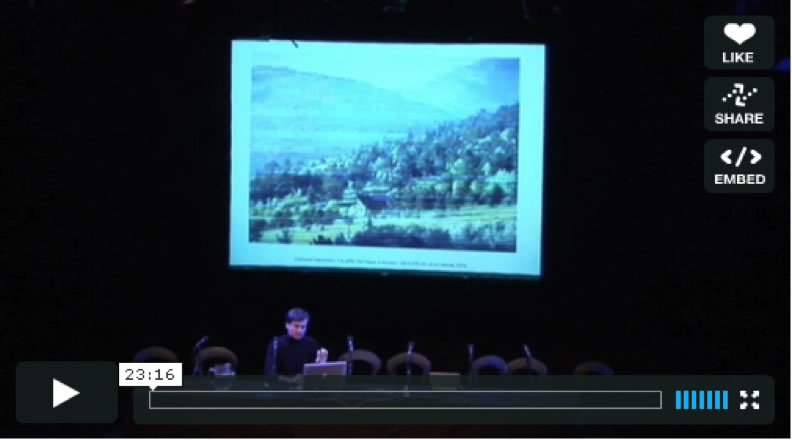
http://www.vimeo.com/2395259
(Yikes, they videoed my presentation and uploaded it!)
Personalised Surface: work in progress
Exhibition at Camberwell College of Arts gallery, Nov. 2008

The Reassurance of Atmospherics
I was invited to submit a paper to Media-N, an online journal of digital and media arts published by the New Media Caucus, a non-profit, international membership organization formed to advance the conceptual and artistic use of digital media.

http://www.newmediacaucus.org/journal
An excerpt:
The reassurance of atmospherics is found through fabricating visual allegories for the fleeting or transient in the face of perfect simulation. Imperfect, tangible simulations implicate an embodied, mobile viewer. This is in contrast to the hypothetically fixed, monocular viewpoint dictated by linear perspective, the supposed panoptic visualizations of Cubism, and the polyvalence of the computer’s virtual windows. Examining the seductions of perceptual ambiguity, thresholds of recognition, abstraction and loss through a synthesis of digital reproduction and painting, opens space for metaphysical reflection, whilst excluding the distractions of stylistic expression, virtuosity or affectation.
Painting is an exemplary field in which to explore the duality of perfect resemblance and absolute chaos engendered by entropy. For we are lost to the garden, removed from nature, and painting operates as a technique to reconnect to the primal, a way of transforming immaterial representations back into physical objects.
V&A Conference

The V&A conference was seen as the culmination of the Personalised Surface research project and will result in a publication at some point.
Two speakers at the conference interested me particularly: Catherine Mason presented her research into British artists engaging with computer graphics and cybernetics from the 1950s to 1980s. Ruth Pelzer Montada discussed the significance of the expressive, physical mark and repetition within printmaking, with some useful references, including texts by Richard Shiff (Realism of Low Resolution: Digitisation and Modern Painting) and Laura U. Marks (Touch – Sensuous Theory and Multisensory Media). She discussed haptic surfaces and looking as a sense of touch, linking to my own research into Merleau Ponty’s Eye and Mind and Heidegger’s The Question Concerning Technology. Technology as something that gets in the way of direct human experience– as distances and times in the world are made ever shorter through technology, we move further away from a connection with the earth.
Conceptually integrating the lenticular work within my overall research, Painting in the Light of Digital Reproduction, has yielded some interesting lines of inquiry. These include describing lenticular design as ‘quasi-painting’, to do with the exaggerated version of painting’s special qualities - surface and illusion of depth - presented in 3D lenticulars, inviting the viewer to move in and out to find where the illusion collapses. Also lenticular prints are necessarily three-dimensional objects, even if extension into the third dimension is through a transparent, ridged sheet of plastic. Burgeoning thoughts around outmoded technologies and their collision with the digital also come into relief - awareness of the apparatus vs. perfect simulation.
I have been able to continue experimenting at Chelsea, moving onto a larger A2 scale with the prints, although my primary practice based research will certainly be in painting from now on.
Screen Printing
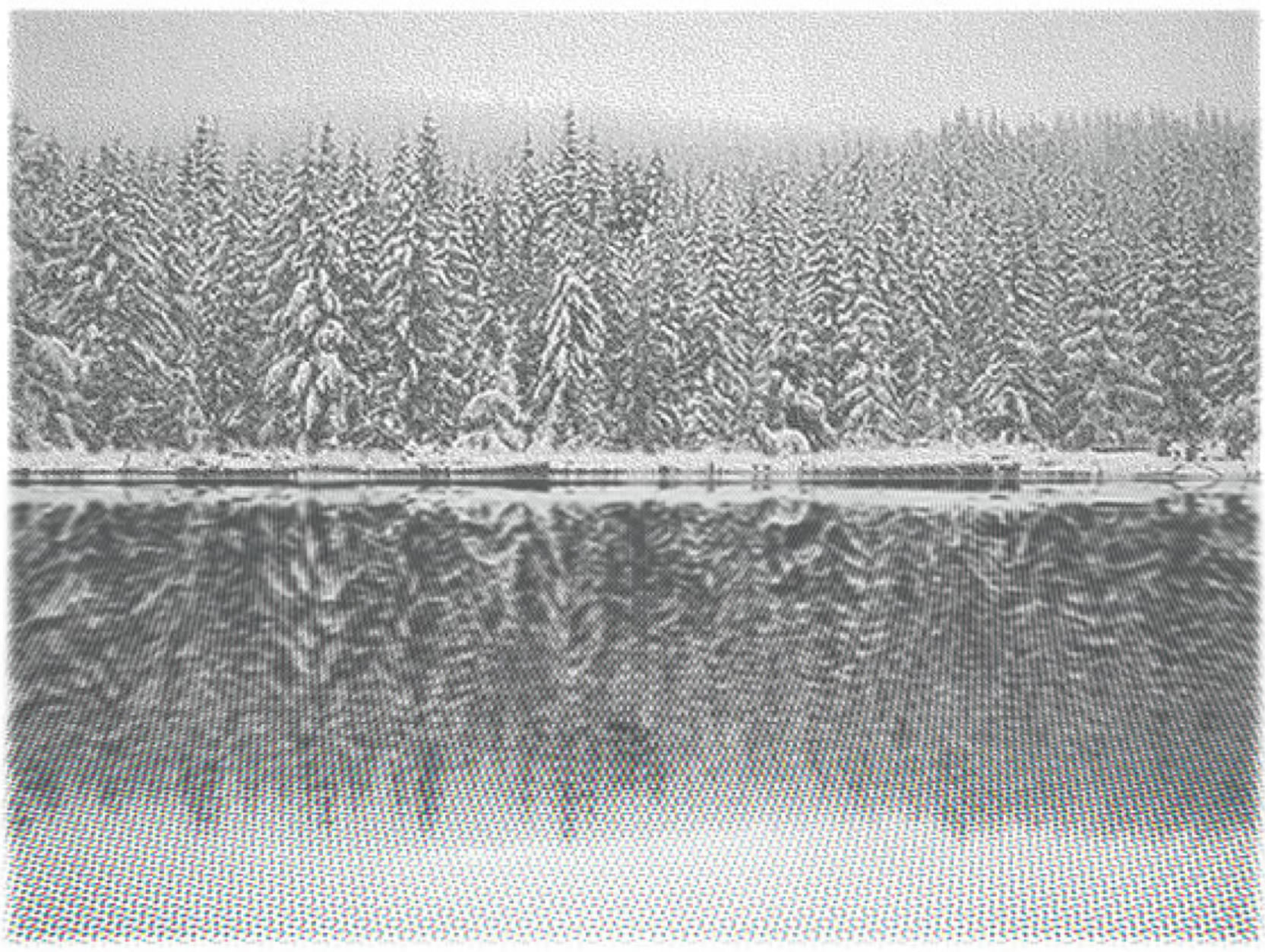
Spring Snow, 2009, screen-print on Velin Arches Blanc paper, 57 x 76cm
Commissioned by The Multiple Store
www.themultiplestore.org
Details:
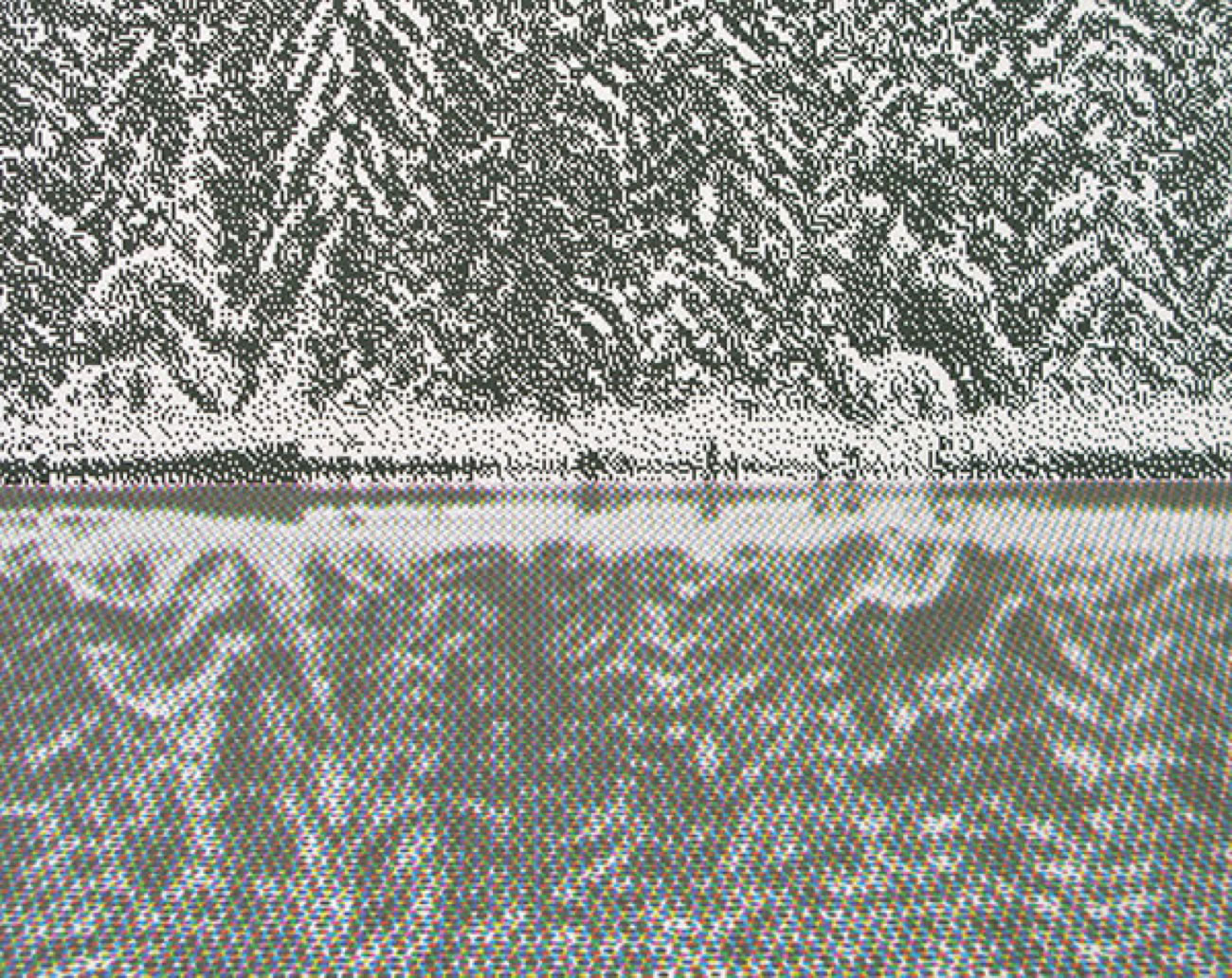

Being asked to make a screen-print presented an interesting challenge, as I hadn’t worked in this medium since being on foundation. Thinking of bringing into one image the perceptual qualities of four colour separation and half-tone screens with the pixellated matrix of the digital was a way of extending the metaphorical resonances presented in the painting Colorado Snow Effect 6. Many experiments were made until I hit on the idea of pushing the half-tone pattern of the coloured reflection into perspective, so that the rosettes of dots suggested the floral qualities of Claude Monet’s water lilies, although artificially regimented through the ordering prism of technology.
Getting the colour balance right required many experiments and, even now, natural and artificial lighting can vary the perception of the work. Spring Snow is necessarily flawed, a futile representation of nature, a constructed technological sublime complete with the associations of hope, memory and loss that this brings.
The title Spring Snow is a melancholic allusion to Yukio Mishima’s story of the same name, where the relationship between two young lovers is disrupted by the pressures of Japanese society and terrible circumstance towards a tragic ending. Thoughts of Monet echo here, considering the influence of Japanese printmakers like Hokusai on his work.
Exhibitions
Garden of the Sleep of Love
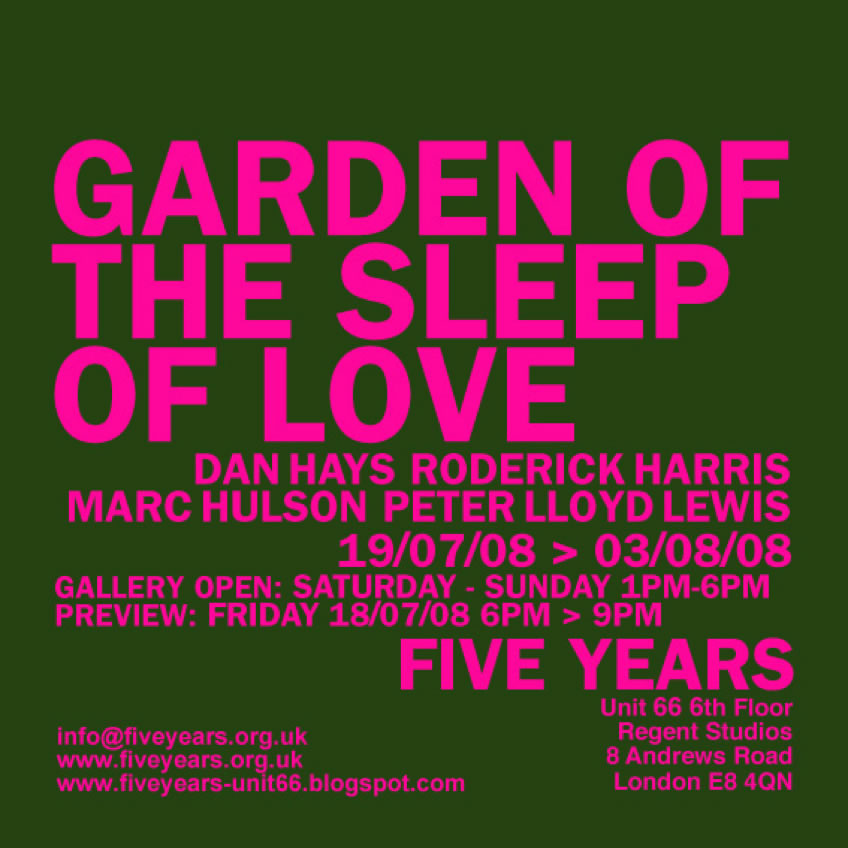
This show came about through being asked to write and be written about for issue 5 of Turps Bannana magazine (see the Writing section and extract of text by Marc Hulson in the Painting section). The title of the show is a translation of the French title of a passage of music from Olivier Messiaen’s Turangalila Symphony, which I have loved for many years. Painting the walls of the tiny gallery grey and installing spotlights heightened a sense of dark, hybrid atmospherics running through all the work.
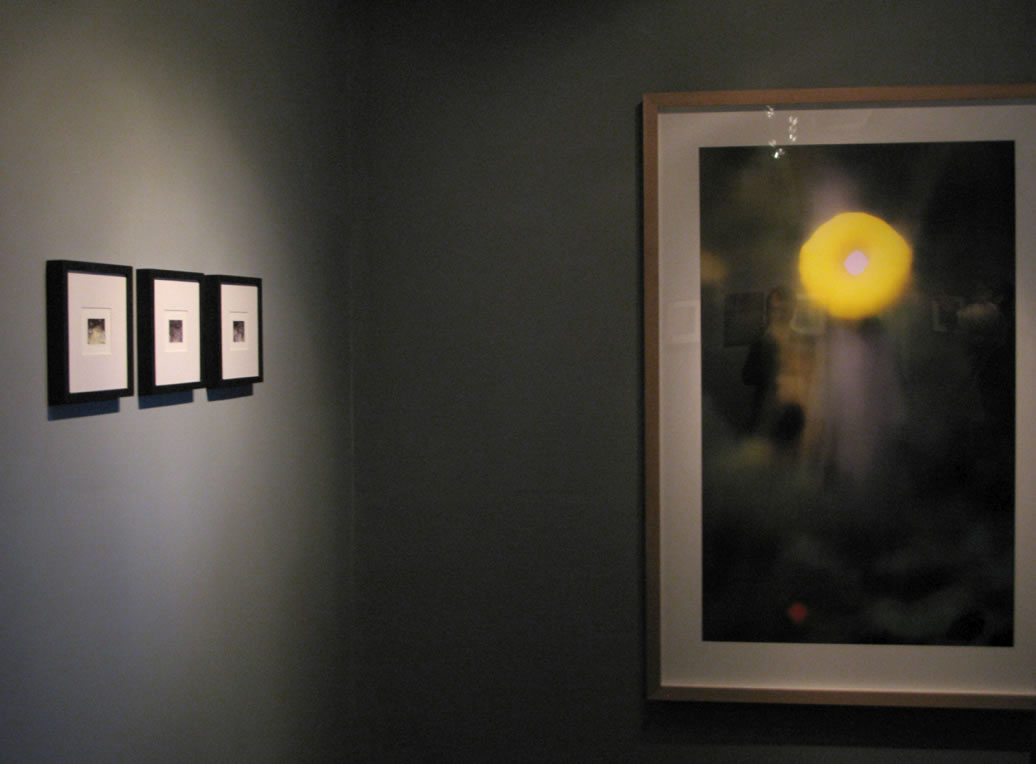
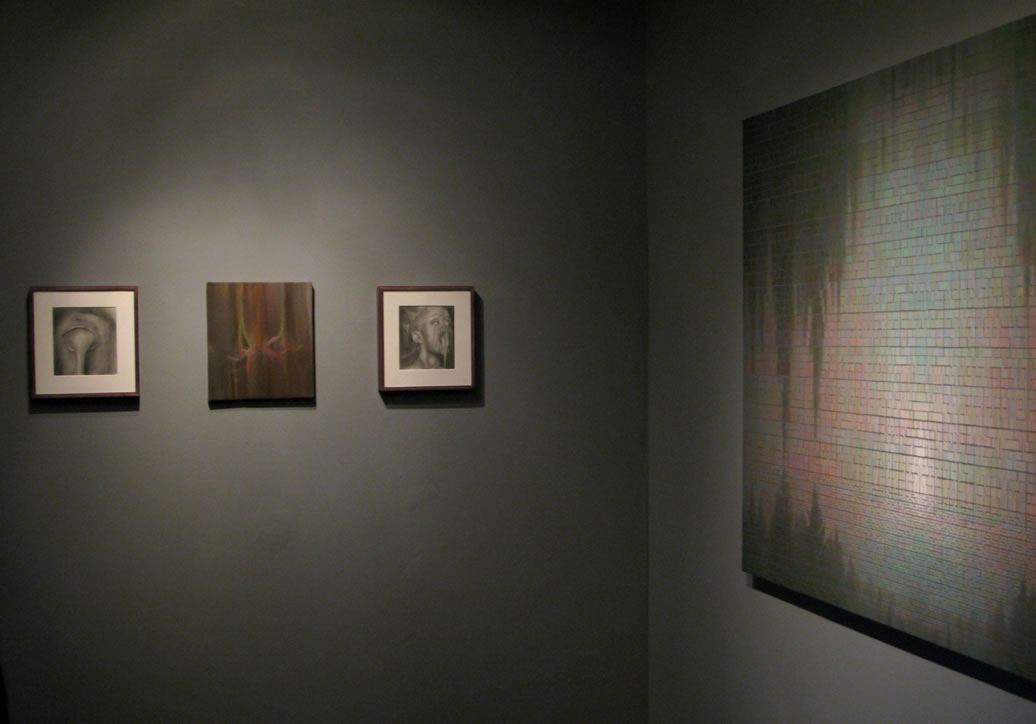
See the Five Years Gallery blog
Embedded
Gimpel Fils Gallery
4 July – 29 August 2008
Caroline Achaintre, Nick Crowe, Dan Hays, Woodrow Kernohan, Brighid Lowe, Caroline McCarthy, Johannes Maier, Suzanne Mooney, Abigail Reynolds, Dan Shipsides, Jeffrey Ty-Lee
From the press release:
Images are built out of complex processes of engagement and use, made particularly visible through the impact of new technologies as they change attitudes towards surveillance, information gathering, pornography, celebrity and so on. This exhibition examines the systems that affect such change. The artists taking part can be compared to the embedded news reporter, in that they are working from within the processes of image manufacture. From this position, the work exhibited is able to provide revelatory and expansive commentary on the structures that bring images into being.
Failing Light
Zürcher Studio, New York
6 March – 2 May, 2009
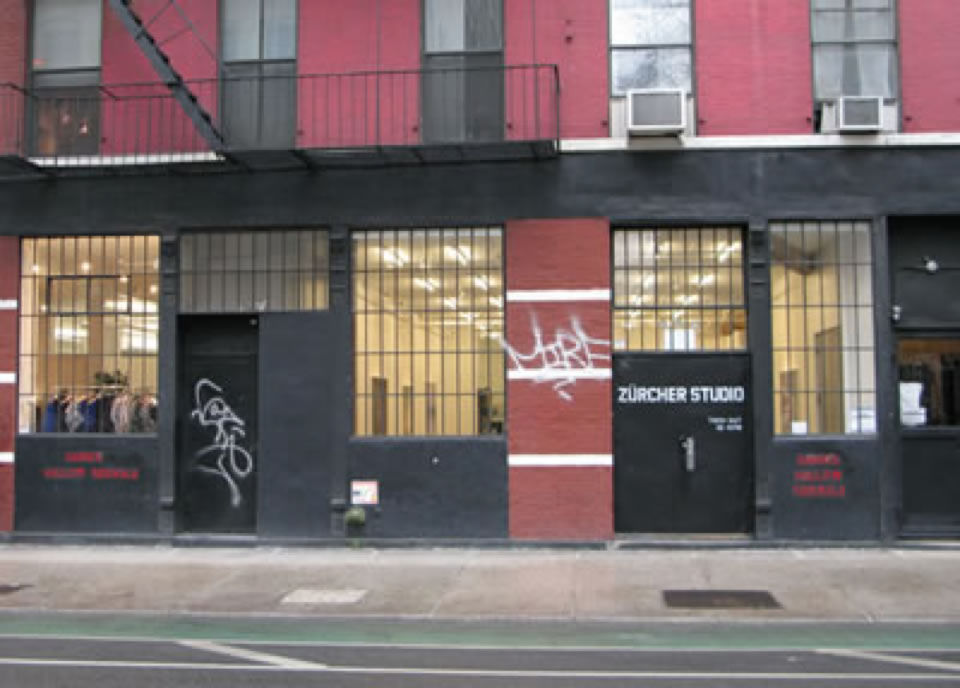


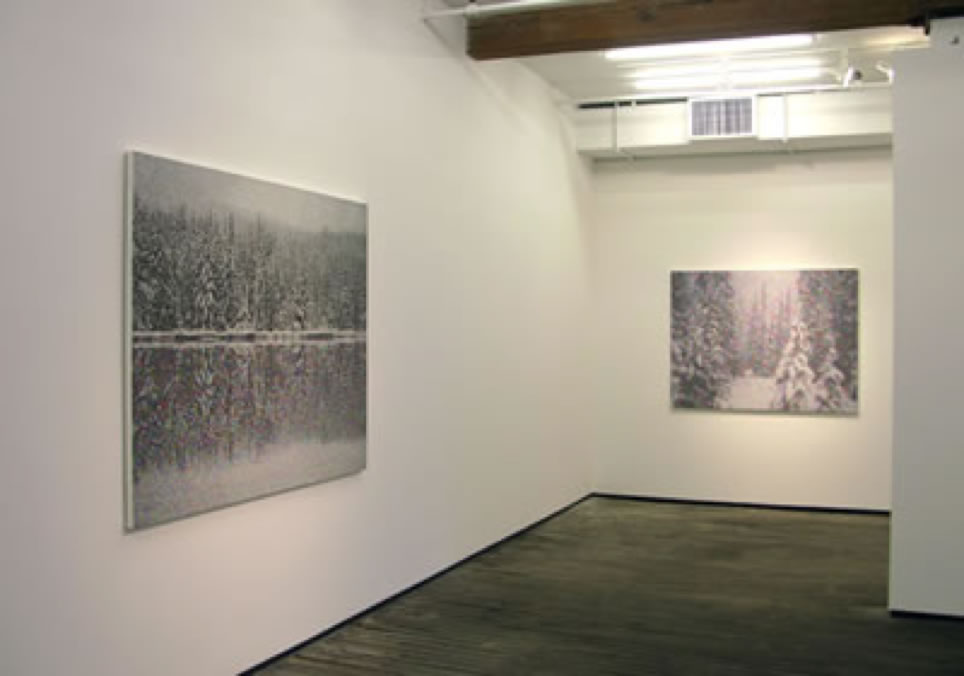

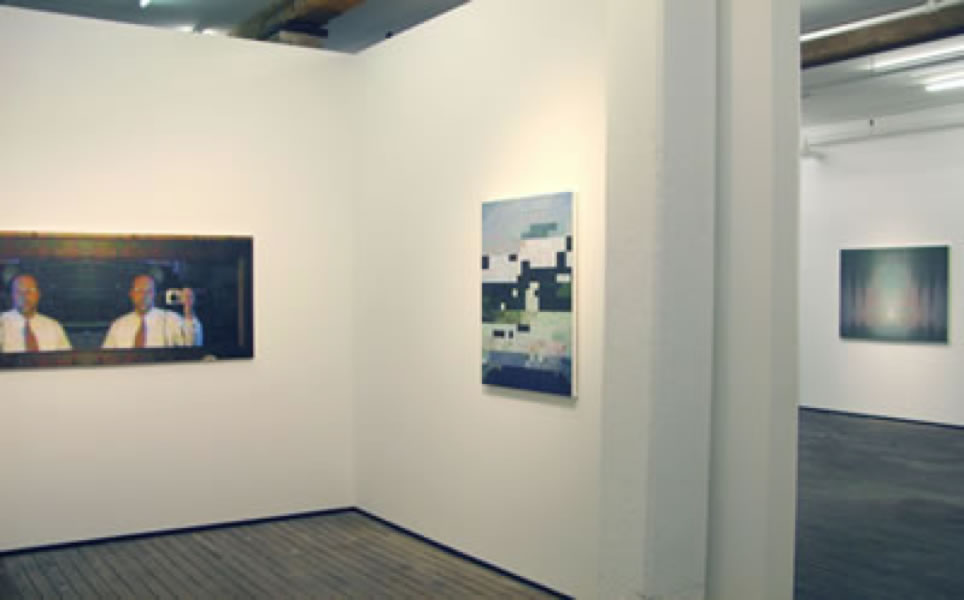
The title for the show was intended to be both playful and melancholic. Failure is such an un-American word. Painting the light of the sun or moon, apart from being in danger of verging into romantic kitsch, inevitably implies technical failure in terms of representing in coloured mud the brightness of a celestial body perceived directly.
Symmetry and doubling featured through most of the work in the show. The use of symmetry with depictions of nature implies an underlying order to things, and can be viewed from several perspectives: the religious or spiritual, the scientific or technological, and the gothic or uncanny.
See and read more about the works featured on the Colorado webpage
A small publication was produced to accompany the exhibition with a text by Bernard Zürcher:
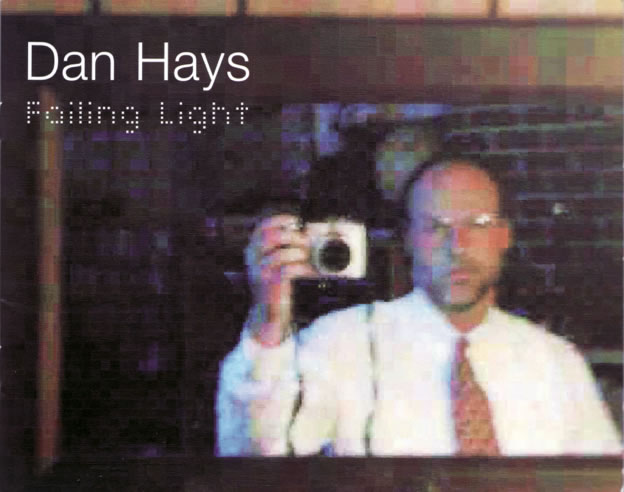
Web Design
A large amount of time since December has been devoted to constructing a website from scratch with Adobe Dreamweaver with reference to several technical manuals. It currently numbers 228 pages.
In my research proposal I indicated that the site would be envisaged as an experimental space where the textual side of my research would be presented with all the hyper-textual possibilities, linking to external websites and cross-referencing pages within the domain, etc. To some degree this has been the case, although at this stage the site perhaps inevitably reads as a showcase of work I have done over the last twelve years or so. So an exercise in self-indulgence it has certainly been, and I have wrestled with approaching analysis of art work and associated subjects in different voices, sometimes more personal and anecdotal, others more cold or indifferent. This has been a disconcerting exercise, realizing that a very strong quality of my work has been its self-enclosed, hermetic nature (perhaps highlighted most in the cage works or the recent plays with symmetry). However, the inescapable fact of having stuff ‘out there’ 24/7 has helped to maintain an on-going critical, objective and hopefully more creative response to the abiding themes of my work in general terms.
I hesitate in saying this, as I have had a disconcerting and somewhat disabling sense of having caught up with myself - in the sense that, however predetermined the work appears, subjects and themes have been chosen through accident and intuition over the years. Subjective feelings of excitement about a project, and its relative success or failure are entirely dependent on these subconscious and arbitrary ‘gifts’. So pushing the website from this foundational platform somewhere else, employing uncertainty and a deconstructive vandalism could be the way forward from here. There are several ideas, including the building of a parallel, dark website; introducing digital entropy to images and text for the returning visitor; daily or weekly changes of mood, reflected in the design and tone of the text.
I will continue speculation on this in the Looking to the Future section at the end of the report.
Writing
In October last year two separate writing commissions were published:
Across the Water
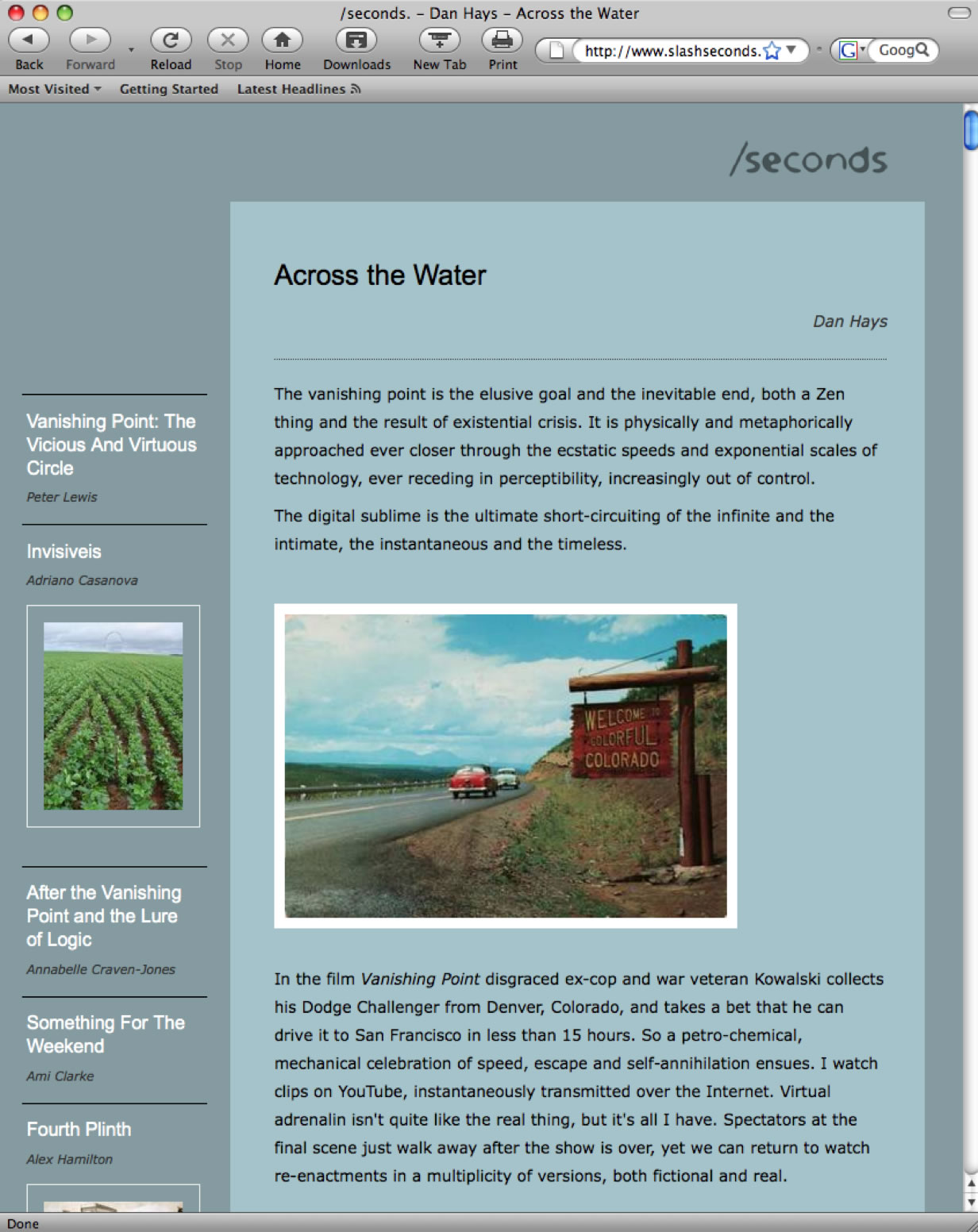
http://www.slashseconds.org/issues/003/001/articles/dhays/index.php
Pete Lewis, artist and editor of /seconds, invited me to contribute something specifically for this issue of the online art journal, as the theme Vanishing Point: The Vicious And Virtual Circle was developed out of the film 'Vanishing Point' by Richard Sarafian (1971), which had uncanny associations with my Colorado Impressions project. The anti-hero of the movie, ex-cop and Nam veteran Kowalski, collects a car from Denver with the intention of driving it to San Francisco in less than 15 hours. My text incorporated images of my work alongside old postcards from Colorado, offering juxtapositions of older, slower eras and technologies: painting and hand-tinting, alongside digitized internet-sourced imagery. Speed and slowness, the vanishing point as both a spatial and temporal goal.
An excerpt:
The vanishing point is the technical means of constructing illusionistic space through linear perspective. It has infinite distance and zero dimensions. It fixes a hypothetical, monocular viewer in one position. In terms of the dimension of time, it can be taken literally the point where something ceases to exist, or could it mark the onset of timelessness?
So, it is both the vehicle for the fabrication of a supposed scientific or objective view, and the point of temporal disappearance. These meanings converge through the realisation of the near instantaneous speeds of electronic communication, and the ability to perceptually travel anywhere at the click of a mouse. The virtual gaze can reach a multiplicity of vanishing points, thereby reducing the significance of the individual human subject to zero in an infinite diffusion of finalities.
From the Corner of the Living Room
Peter Jones, co-editor of Turps Banana magazine, invited me to write about a painter of my choice for issue 5. In the spring of 2008 I had been overwhelmed by an exhibition of watercolours by Roderick Harris at the David Risley gallery:

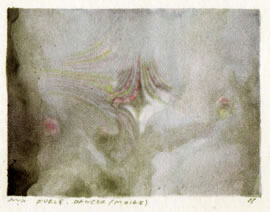
Two watercolours from Fugue, Roderick Harris 2007/08
Inevitably, the decision to write about this work resulted from finding deep affinities with my own concerns, in which the process of writing helped to re-contextualise. Also the style developed a subjective intensity (I hope), echoing the hypnotic dance-like structure of Harris’s Fugue project.
An excerpt:
In Fugue we have a distillation of the ultimate serial form: that of film and video. Comprised of thousands of images, each dependent on its neighbours for context and value, these individual pictures are imperceptible within the illusion of motion. Crucially, the miniature scale of the paintings approaches that of the film frame or viewfinder, so a fragile and unstable unity of the sequential and the iconic is presented. This perceptual ambiguity is a visual allegory for the competing seductions of the instantaneous speeds and seamless simulations of electronic communication, and the contemplation of the momentary or timeless within the still image. Narrative development and repetition are short-circuited. Serial or cyclical structures are parodied, hip-hop style, like records waiting to be scratched, in a dance alongside painting’s two-fold nature – a synthesis of the immaterial, virtual realm of illusionism, and the material, fleshy surface of things.
Symposia
As already mentioned, I took part in two symposia in connection with the lenticular research with The Personalised Surface within Fine Art Digital Printmaking project for University of the Arts.
Helen Sear, artist and reader in Photography and Fine Art Practice at the University of Wales Newport, invited me to be one of four speakers at a symposium titled Significant Surfaces: Material or Immaterial held on 18th March 2009. The other speakers were the artists Mary Maclean and John Goto, and David Surman, Senior Lecturer in Computer Games Design at Newport. We were given a provocative text to respond or react to in preparation for the event: Towards a Philosophy of Photography by Vilem Flusser.
I presented my work with special attention to ideas around surface, screen and metaphors for skin and flesh presented by the materiality of paint in contrast to the immateriality of the digital. Noise, entropy and loss were highlighted in connection to the ‘outmoded’ technology of painting and the progress of digitization towards ever more seamless simulations. I took issue with the notion of the apparatus as something that gets in the way of supposedly accurate representation or communication. Highlighting or foregrounding the apparatus or screen works as a metaphor for the human condition and necessarily imperfect, subjective perception. The work of Mary Maclean and Helen Sear, through photomechanical and digital processes, respectively highlights these surface qualities and will prove useful in conceptualizing the textual side of my research.
I also attended a two-day conference in November titled Photography as a Medium (Post-Digitisation), hosted by the Department of Art History and Theory at the University of Essex and the Department of Philosophy at the University of Warwick at Senate House, University of London.
LOOKING TO THE FUTURE
As is hopefully presented in the previous section, a broad research framework is clearly outlined – one that is self-generating and grounded in many years of continual practice and occasional engagement with theory and analysis.
My methodology can be characterized as working on several fronts in alternation. Over the last year developments have been prompted by external forces: the two writing commissions, an invitation to be an artist case-study in a research project, and being asked to produce an edition – not to mention working towards the show in New York. These various activities are still being assimilated into thinking about working towards completion of the PhD. Following I will discuss the nascent plans for continuing with the practice and textual sides of the research. There are many speculative ideas at this stage, as possible projects in terms of writing and art production are developing their own logic, in some cases with the influence of outside agencies – other artists or galleries.
Following, I will do my best to present a realistic timetable and abstracts for these researches, given that my paintings can take many hundreds of hours, and the broad range of artists and writers informing my research:
The exhibition in New York in March represented in some ways the culmination of three or four years of work. The thematic range: snow-scapes, natural and artificial light, figure in landscape, self-portraiture, refracted through the prism of digital noise and glitches, has been pushed through various technical conceits within the confines of the grid: symmetry, repetition, simulated textures, skewing, colour separation, directional brushwork, etc. Within this broad, if limited, range of possibilities future paintings will evolve. Gathering and working through source material is my current situation, looking at found photographic imagery from websites in Colorado and beyond (!?).
Having reached some kind of foundational stage with the website and concluding (for now) my work with lenticular printmaking, I have launched into painting production - something I have had a break from since the show in New York three months ago. I'm working with a corrupted Colorado traffic webcam image from Vail Pass:
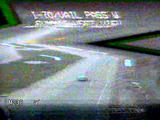
'Vail' is an obsolete spelling of 'veil', but also suggests 'vale', meaning a valley or the world, as in vale of tears. The associations of veil and screen are potent along with the landscape allusions. Formally, it will be a heavily layered work, distressing the nebulous image to thresholds of recognition as a scene through colour modulations and more expressive mark-making than much of my recent work. I expect to complete this large painting by September and complete two more by the New Year.
There are several banks of images that are being sifted through and worked on at present, and possible combinations being tried out through collage in Photoshop – temporal juxtapositions in terms of different times of day, either simulated or found, and historical in terms of art history:
Images from around sixty webcams in ski-resorts, towns and highways in Colorado sampled at all hours of the day, with particular attention to technical glitches and poor lighting – either under or over exposure:


A growing collection of old postcards from Colorado, which have started to develop their own surreal narrative, possibly in combination with contemporary images from the same locations. This is largely thanks to Dean Kenning's revitalisation of the Centre For Useless Splendour, as formulated by Elizabeth Price. Technical possibilities being considered include combining photomechanical reproduction and hand tinting with the digital:

See http://danhays.org/postcards.html
Images and low quality video footage connected to the US Air Force Academy in Colorado Springs (tackled before in works such as Colorado Impression 13a):

Screen shots of the ‘digital sublime’ as presented by Google Earth:
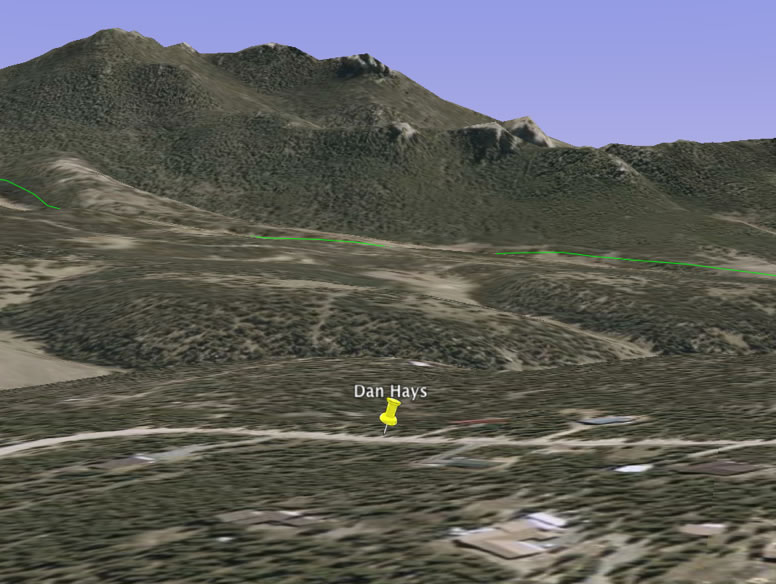
The relatively few images online of someone dressed as Yogi Bear – suggesting a comprehensive painting survey of people trying to commune with Mother Nature through the agency of an out of fashion cartoon character (see Transcendental Meditations). And connected to this, a bank of images of supposed sightings of Sasquatch (or Bigfoot) in the American wilderness – there are many.
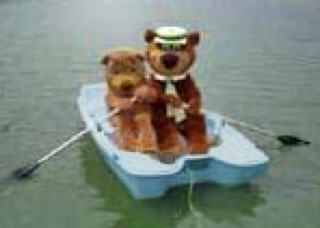
Working towards a solo exhibition over the next two years is central to my thoughts about bringing all my research material together in one place. In parallel to this, the dissemination of themes will continue within the website, aiming to have a substantial ammount of written material to bring together in a more coherent form, hopefully in some kind of publication. Looking into possible venues for this solo exhibition will become a priority over the next year.
I have been invited to make work for an exhibition early next year at Galleri Tom Christoffersen, Copenhagen. The two young painters I will be showing with, Allan Otte and Marie Søndergaard Lolk, produce exceptional work with exciting resonances with my own, touching on photo-simulationism and digital-materialism respectively (to coin two compound words having little chance of entering the OED).
More substantially, in the context of the PhD, I have been in discussion with other artists about curatorial projects, which are connected to the theme of landscape representation filtered through technology. Two related exhibitions, Fakescape and Unscene in 2000 and 2002, in which I had curatorial involvement, form the basis for reflection and possible expansion involving the original artists and many newcomers. Thinking about this prospective show over the last few months has made me begin to construct a hypothetical curatorial project, offering a platform for the exploration of my themes in written form, to be presented as a virtual, perhaps simulated exhibition linked to my website. Stemming from the two writing commissions last year, Across the Water and From the Corner of the Living Room, which engaged with two very distinct subjects, a 1970s film and an exhibition by a contemporary artist, possibilities for expansion with eclectic subject matter becomes more apparent. Basically, finding various ways to access my own theoretical concerns – painting in the light of digital photography – through diverse sources derived from art history, contemporary art and popular culture. There’s a growing list of mostly lesser-known contemporary artworks by people such as Helen Sear, Guy Sherwin, Mary Maclean, Niamh O’Malley, Susan Collins, Allan Otte, Marie Søndergaard Lolk, Gordon Cheung, Paul Winstanley, Beth Harland, Marc Hulson, Paul B Davis, Franz Gertsch, Julian Opie and Tim Head, through which I aim to tackle the polymorphous subject of Projected Landscapes and Materiality, looking at specific works of these artists and in the context of digital technology and landscape representation, and covering themes such as screen, window, surface, data compression, noise vs. simulation, artificial perspective and the vanishing point - atmospheric synthesis and symbolic potential. Guy Sherwin's film performance Paper Landscape will describe the phenomenological field and possibly the narrative trajectory of this writing. (I touched on this work before in an essay for Culture Machine). This will involve a dialogue with some of the artists.
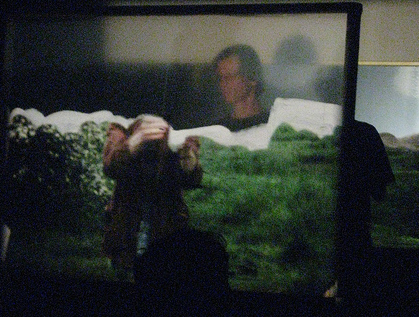
Guy Sherwin, Paper Landscape
1975-present
There is not the space to elaborate here, or indeed present a more focussed explanation of this project, as it is in the early stages. I have been reading and taking notes around my themes, and it is only through immersion in writing, as I hope demonstrated in the recent two essays, that strong themes and connections emerge.
Some examples of texts feeding into the research:
Jean Baudrillard - America, Simulacra and Simulation, Symbolic Exchange and Death.
Andrew Benjamin - On Different Images: Painting and Photography.
Jonathan Crary - Suspensions of Perception.
Hal Foster - Return of the Real and Compulsive Beauty.
Anne Friedberg - The Virtual Window.
Hanneke Grootenboer - The Rhetoric of Perspective.
Charles Harrison - The Effects of Landscape and On the Surface of Painting.
Martin Heidegger
- The Origin of the Work of Art and The Question Concerning Technology.
Laura U. Marks - Touch: Sensuous Theory and Multisensory Media.
Rosalind Krauss - Grids.
Maurice Merleau-Ponty - Cezanne's Doubt, Eye and Mind, Indirect Language and the Voices of Silence, and The Chiasm.
Barbara Novak - Nature and Culture: American Landscape and Painting and Voyages of the Self in America: Image, Text and Context.
Richard Shiff - Realism of Low Resolution: Digitisation and Modern Painting.
Richard Wollheim - Art and Its Objects and Painting as an Art.
I intend to tackle works by four of the artists by this September, and the rest by January, and envisage the text being between 8,000-10,000 words. Writing styles or voices may expressively reflect the nature of the work under discussion, although not in forced ways. These could range from the personal, robotic, phenomenological, romantic, hyperbolic or poetic.
This writing will feed into the planned research for next year, connected to hopes of being accepted on a summer residency in France:
The history of landscape painting, the late 19th century in particular, has been the scenic backdrop of all my work over the last ten years. The further study of this will form the basis for my research in 2010. As has been stressed in my research proposal, and indeed for many years, the core interest has been in the relationship of digital image compression and Impressionism. Research into the American landscape tradition, following the American Sublime exhibition at the Tate in 2002, has recently opened up territories (ah, more landscape metaphors) for further exploration and possible appropriation, primarily engaging with the work of American painters dubbed Luminists, among them Sanford Gifford (my personal favourite, who did travel to Colorado, yet abruptly ‘took off’ with a geological expedition to Wyoming leaving his paints behind). The Luminist's near elimination of the physical brushstroke with carefully modulated colour connects strongly to some of my own formal explorations of pixellated imagery, in contrast to the expressiveness of Impressionist brushwork and limited palletes, and Post-Impressionist use of divisionism and additive colour. The linking factor is the eschewal of line, with philosophical connotations linked to awed or realist perceptions of nature, retreat of the figure in landscape, wilderness and narratives of encroaching technology.

Sanford Gifford, The Wilderness, 1860
American Transcendentalism, a strong influence on the Hudson River School and Luminism, is an abiding concern for my research – the appreciation of Nature and the wilderness as sacred and landscape painting's symbolic potential, in contrast to the realism of Impressionism. My own work could be characterised as a synthesis of digital photorealism and the symbolic potentialities of corrupted, low resolution landscape images.
"Water has a special significance in American landscape painting, linking different kinds of esthetic and landscape. The subject of much contemporary comment, the "unruffled mirror" motif bears strong feelings... Even in the large, dramatic compositions, which maintain contact with the older sublime, water often inserts a quota of silence, symbolizing a spirit untroubled in its depths and unifying both surface and depth in its reflection of the world above." - Barbara Novak, Sound and Silence: Changing Concepts of the Sublime.
"I become a transparent eyeball; I am nothing; I see all; the currents of the Universal Being circulate through me; I am part or parcel of God" - Ralph Waldo Emerson
"... a natural eye forgets tactile illusions and their convenient dead language of line, and acts only in its faculty of prismatic sensibility. It reaches a point where it can see reality in the living atmosphere of forms, decomposed, refracted, reflected by beings and things, in incessant variation. Such is this first characteristic of the Impressionist eye" - Jules Laforgue, Impressionism.
Through technical experimentation – a protracted, methodical, lost (can’t see the wood for the trees) approach to filling a canvas - and approaches to the sublime, both in terms of technology and nature - affinities to the work of other artists has emerged, including (of course) Georges Seurat, Roy Lichtenstein, Robert Ryman, Gerhard Richter and Chuck Close, which requires written study.
"[...],these artists pass the given image through, or draw it up from, the grain of material emulsion, so that it exists in a more resolutely physical or bodily state than that of its source. The preexistent image becomes more of a material thing than it had been, and less perfected, less pure a vision or statement[...]. Through this process, paradoxically, the image becomes more natural than it had been, because noise is the natural state of affairs, a confused, entropic base for all sensory experience. Perhaps this image-with-noise amounts to abstraction [...] at work in reverse, an energising of the image that complicates rather than reduces it. This is by no means traditional illusionistic realism (nature dematerialised and rendered optical), nor is it simulation (culture dematerialised)."
- Richard Shiff, Realism of Low Resolution.
I’m going to apply for a summer residency at the Terra Foundation for American Art in Giverny, France next year. Fellowships are offered to artists and scholars from America and Europe engaged in research on American Art or the artistic exchange between America and Europe. My parallel researches into French Impressionism and American Luminism (historically concurrent) seem absurdly appropriate, especially given my particular focus on Monet’s work. As well as considering possibilities of somehow engaging directly or indirectly with Monet’s garden and lily pond next door in Giverny, there is another project, which came about by chance a trip through France a few months ago. We stayed with friends living near Barbizon in the Fontainebleau Forest south of Paris. The Barbizon school painters of the mid-nineteenth century - Jean-François Millet, Jean-Baptiste Camille Corot, Théodore Rousseau, etc. – were realist painters working against the Romantic movement of the time and had a strong influence on the Impressionists. There’s a fantastic early Monet painting titled The Bodmer Oak, which I have loved for many years and had some influence on my Forest paintings of the late 1990s. There’s a picturesque section of the forest near Barbizon famous for the oaks and rocks painted over the years by a role-call of 19th century painters, including Cezanne. Armed with a reproduction of Monet’s painting I spent a morning in search of the famous oak (named after the Swiss landscape painter Karl Bodmer who painted it repeatedly) to no avail. I would like to return and continue the search for a probably long dead tree, possibly finding contemporary stand-ins or rotting stumps. (I also have inklings that this futile quest could become a meta-narrative for the written side of the research).
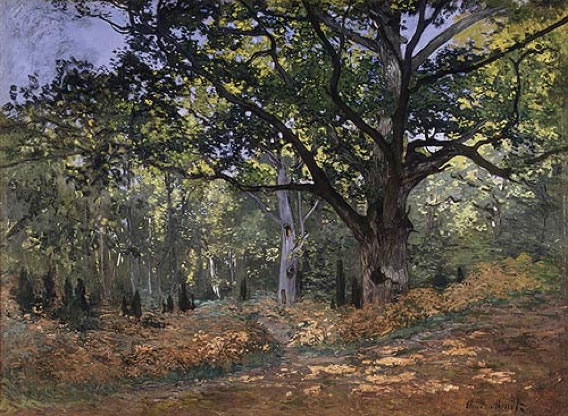
Claude Monet, The Bodmer Oak, Fontainebleau Forest, 1865


Finding appropriate technical expressions for these possible projects in terms of photography and paint is entirely uncertain at this stage. As for integrating these French excursions into the broader project, it will represent a return to its roots, as the origins of my interest in the relationship of digital or electronic imagery and painting in the late 1990s grew out of painting snow-scenes photographed in France and video footage of Monet’s garden at Giverny. Perhaps I should paint and sketch en plein air at last.
I realise that my overall methodology, both through practice and text, could appear extremely discursive for the supposedly tight confines of a general perception of PhD research. I want to strongly argue the case for this kind of room for manoeuvre. This has always been the nature of my practice, and I hope that scrutiny of my development reveals that openness to accident and chance, and a questioning of previous work, has resulted in a distinctive artistic progression that incorporates the possibility of failure as an allegorical principle. To my knowledge there are surprisingly few painters engaged with post-digital photography, or indeed writers who have tackled the phenomenological ramifications of this in terms of the history of painting. It is on this basis that I hope that my disparate researches can offer a significant contribution to knowledge, living up to the proud traditions of the Centre for Useless Splendour.
PLAN OF WORK TOWARDS COMPLETION OF PHD
July - September 2009
Write extensively about works by four of the contemporary artists listed for the hypothetical exhibition proposal, including Guy Sherwin and Helen Sear.
Complete the painting Vail Pass, oil on canvas, 54"x72"
Continue discussions with artists about a possible group exhibition related to my research.
October - December 2009
Continue writing about the work of up to ten other contemporary artists, completing the virtual exhibition proposal/tour/review, publishing it online (working title: Projected Landscapes and Materiality).
Work on two more paintings the same size as Vail Pass, derived from webcam images from Colorado.
Apply for the The Terra Foundation for American Art's summer residency at Giverny, France.
January - June 2010
Continue making paintings based on web-cam images and some of the other source material I've been studying, especially ways of translating or combining postcard imagery into paint alongside the digital.
Define a new narrative framework for my practice, which incorporates research into late 19th centuray French and American landscape traditions, Impressionism and Luminism - and relate this study to a range of prominent artists, including Seurat, Richter, Ryman and Close.
Make approaches to galleries with the new, growing body of work in terms of finding a venue for a solo exhibition around mid-2011.
July - December 2010
Produce paintings in response (hopefully) to the Terra residency, related to Monet's Giverny and the search for the Bodmer Oak, conceptually or narratively incorporating these 'excursions' into the body of my work as a whole.
Read and write extensively around formal and philosophical links and contrasts between French and American landscape painting, and make a particular study of photorealism in the light of digital technology.
Continue with the production of paintings based on Colorado sourced images, hopefully by this point having completed perhaps eight canvases towards the PhD show.
2011
Bring the parallel researches into the history of landscape painting and painting in the light of digital photography (my research title) into closer proximity, aiming to produce a discursive, yet narratively coherent text to be presented as the written side of my research by the summer.
Complete a substantial body of paintings for exhibition, which will inevitably articulate all of the research questions (without answering them).

